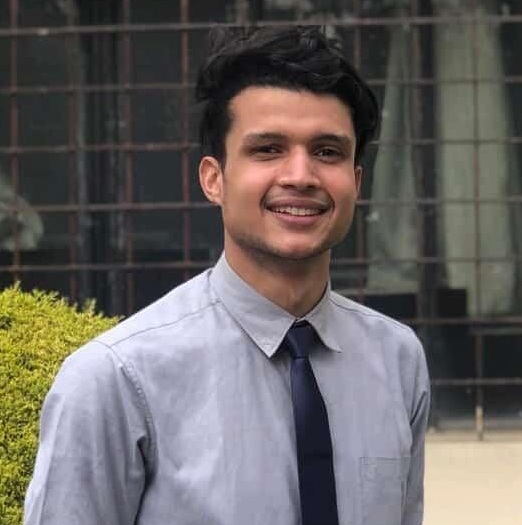Columns
Are we really listening to Gen Z?
If we rely only on social media, we risk trading depth for speed and facts for opinions.
Diwas Dahal
The Nepali Generation Z is living in two Nepals at once. On one side, there is the Nepal of our preceding generations: Newspapers/radios in the morning, Facebook scrolls in the afternoon and broadcast news in the evening. On the other side, there is our Nepal: Doomscrolling through Instagram and Facebook for reels, TikTok clips, Twitter and Reddit threads, where our peers argue, laugh, criticise and dream about change.
Both worlds are loud and passionate, but they rarely speak to each other. This gap might look harmless, yet it is one of the greatest risks facing our democracy today.
Two generations, two worlds
For decades, older generations in Nepal shaped political change. They were the “king makers,” not just because of their votes, but because they were informed about current affairs. They read newspapers, tuned in to radios and closely followed political news. Mainstream media gave them context, depth and a shared sense of what was happening in Singha Durbar.
Now, the story is different. The new generation is politically awake. We are not silent, not indifferent. Youths today are posting, protesting and asking questions previously considered political taboo. But these conversations are mostly limited to Instagram, Reddit, TikTok, X and Facebook. These social media platforms are not popular options among a wide group of older Nepalis.
This means that Gen Z voices, full of passion and ideas, often circulate in small online circles but rarely reach the wider nation. Hence, the generation’s voice remains misunderstood.
Digital and language divides
This gap is not only about platforms. It is also about access and digital literacy. Many young people, whether in cities or towns, are active on major social media platforms. But large sections of the population are still left out of these conversations. Some lack stable internet access or electronic devices. Others, especially older generations, are not as comfortable as younger generations in juggling multiple applications and news formats. They prefer to stick to traditional media or a single familiar platform like Facebook.
This creates two divides: An access divide where everyone cannot participate equally and a generational divide, where even with access, older people struggle to keep up with the pace and diversity of digital platforms.
Beyond the digital divide, an intergenerational language barrier persists in Nepali society. Many youths today feel more comfortable expressing themselves in English, but most mainstream media still produce news in Nepali.
This mismatch creates walls. A large portion of Nepal’s population cannot follow conversations in English, and at the same time, many youths find mainstream Nepali coverage less engaging. Intergenerational misunderstandings deepen. Older generations assume the younger generation is apathetic to current affairs. In reality, the younger generation is equally concerned, but in a language and style that hasn’t been translated across generations.
Promise and risk of social media
Of course, there are bright spots. Journalists and influencers like Sahana Vajracharya, social media pages including Routine of Nepal Banda, journalbyprestige and nonextquestion are bridging gaps, explaining politics and generating awareness in short, simple, relatable ways that resonate with young audiences. They are proving that serious issues can be explained in formats designed for short attention spans.
But let’s be honest. Social media is a double-edged sword. Not everything posted online is credible. Complex issues are often reduced to catchy headlines or memes, and they are often misunderstood. Most importantly, what goes viral is not always what matters most. If we rely only on social media, we risk trading depth for speed and facts for opinions.
Why this matters for democracy
Some may ask: Why does all this matter? Isn’t this just a matter of preferences? No. This is about democracy itself.
A democracy thrives when citizens across geography, class and generation share information, debate ideas and make decisions on some common ground. But if Gen Z is speaking in English on Instagram, while our parents are listening to political talk shows in Nepali, and youth outside of major cities are excluded altogether, then what happens? We lose connection, trust and unity that democracy depends on.
The role of the media
For years, Nepali news media outlets brought stories from the “offline world” into the digital world. Today, it is the opposite: Mainstream outlets increasingly pick up stories that start online. The flow of information has reversed.
That means the media must now bridge two realities. It must amplify Gen Z voices from digital spaces so they reach the entire nation and present news stories in ways that resonate with young audiences without sacrificing depth or credibility.
This will not be easy. But if the media fails to adapt, the gap between young and older generations will grow wider, and democracy will bear the brunt.
I write this piece as a young Nepali who scrolls both news portals and Instagram (and plenty of other social media platforms daily) every day, trying to make sense of my country. The passion of my generation is profuse. The confusion of older generations is confounding. There are walls that keep us apart. These walls can be broken.
If media houses innovate, influencers act responsibly and citizens—young and old—try to listen across divides, our democracy can grow stronger. In the end, this is not just about where we get our news. It is about whether we, as Nepalis, can still hear one another.




 18.12°C Kathmandu
18.12°C Kathmandu















